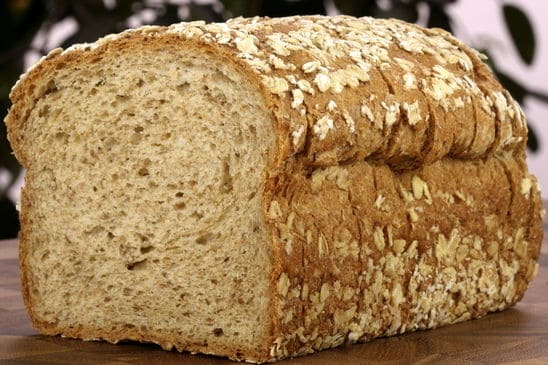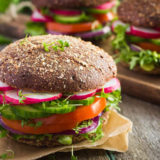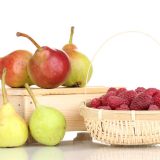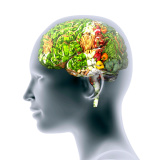

You may be eating a lot of grains, but they might not be whole grains, which are the most beneficial. Whole grains are not broken down before being used in foods. They contain the entire grain kernel. When grains are refined, they are striped down and lose the parts that make them healthy, such as nutrients and fiber. Refined grains are used because they have a longer shelf life and are easier to chew and digest. Enriched grains are refined grains that have had some, but not all, of the benefits added back to it. These are better to eat than refined, but it’s best to just go with whole grains. Wouldn’t you rather eat something that is more ‘pure’ then something that has had its nutrients sucked out, and possibly put back in?
You are probably already eating foods that are, or contain, whole grains. But you still need to be aware of what are and are not actually whole grains. Always read nutrition labels to make sure that the product is really whole grain; if it doesn’t say ‘whole’ before the grain, it is refined or enriched. To be absolutely sure, look for this FDA statement on the package: “Diets rich in whole grain foods and other plant foods and low in total fat, saturated fat, and cholesterol may reduce the risk of heart disease and some cancers.” They may also have the Whole Grains Council whole grain stamp, which will tell you what ingredients are whole grains or whether the product is 100% whole grain.
Corn, brown and wild rice, wheat, amaranth, barley, oats, quinoa, teff, millet, rye, spelt, buckwheat, and sorghum are all whole grains. If you have to eat gluten-free, don’t think that you can’t eat most whole grains; you can still eat corn, quinoa, millet, rice, teff, amaranth, buckwheat, and sorghum. Watch out for oats though, as you need to buy certified gluten-free oats. Even though oats are naturally gluten-free, they are often contaminated by wheat while still in the fields or during processing.
It may be surprising, but whole grains contain antioxidants that are not found in fruits and vegetables. They provide you with key vitamins and nutrients – B vitamins, vitamin E, iron, potassium, selenium, copper, fiber, and magnesium. They’re naturally low in fat and include complex carbohydrates, and can also help healthy bacteria grow in the colon.
By incorporating whole grains into your diet you can lower your risks of chronic diseases such as stroke, certain cancers, heart disease and diabetes. They can also help with weight control and lowering cholesterol.
Everyone needs a different amount of whole grains in their diet. But everyone should eat at least one to three servings a day. There are various sites online where you can calculate the amount of whole grains you should be eating in a given day. The best thing is to visit your doctor or a nutritionist to find out what’s best for you.
Here are some ideas for making sure that you get whole grains into your diet to become a healthier you!:
Ways to Eat Whole Grains for Breakfast
- Cereals, oatmeal, and rolled oats
- Bagels or toast
- Pancakes, waffles or French toast
- Muffins
- Add oats to yogurt
- Quiche with whole grain crust
- Smoothies – add oats
- Energy bars
- Scones
Ways to Consume Whole Grains for Lunch
- Sandwiches, wraps or pitas
- Quinoa salads or dishes – can mix in meats, poultry and veggies
- Barley in soups, stews or salads
Ways to Incorporate Whole Grains for Dinner
- Brown or wild rice – underneath a chicken and/or vegetable stir-fry, stuffed in tomatoes or peppers, in burritos, mixed with veggies, etc.
- Whole grain/wheat, brown rice or quinoa pasta dishes
- Use whole grain breadcrumbs to bread chicken, fish, or eggplant; you can even crush up unsweetened whole-grain cereal.
- Whole grain buns for burgers or hot dogs
- Make or buy pizza with whole grain crust
- Polenta dishes
Snacks or Desserts with Whole Grains
- Popcorn – those with the least amount of butter and flavoring are better. The best choice, pop your own plain popcorn and sprinkle on seasonings.
- Spelt cookies
- Whole grain crackers
- Pita wedges with dip
- Corn bread
- Cookies – with oats or whole grain flours
- Rice pudding
- Pie crusts
- ‘Snack mix’ with cereal, crackers, popcorn, etc.
- Corn chips
Tip: When making or baking foods, make sure to use 100% whole grain flour, not white flour. Or you can use half and half. But if you can, try to use all whole grain flour, it’s much healthier.




